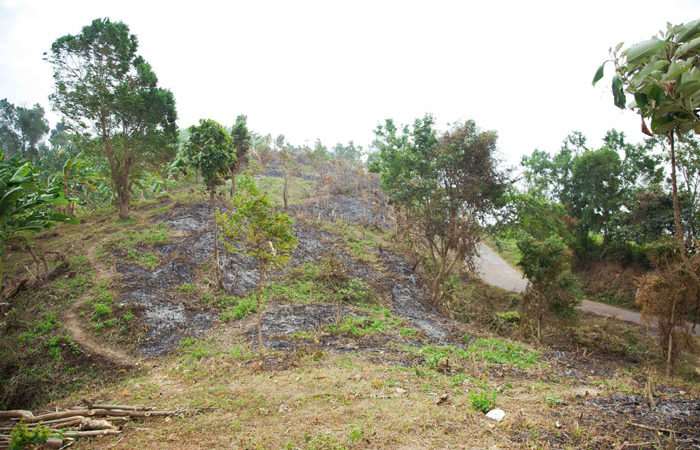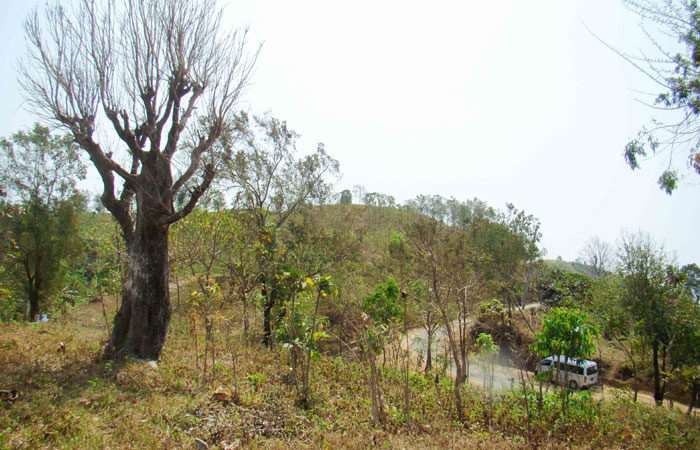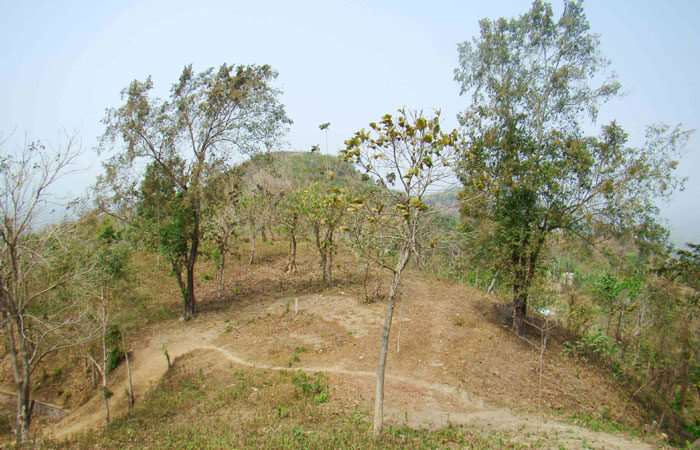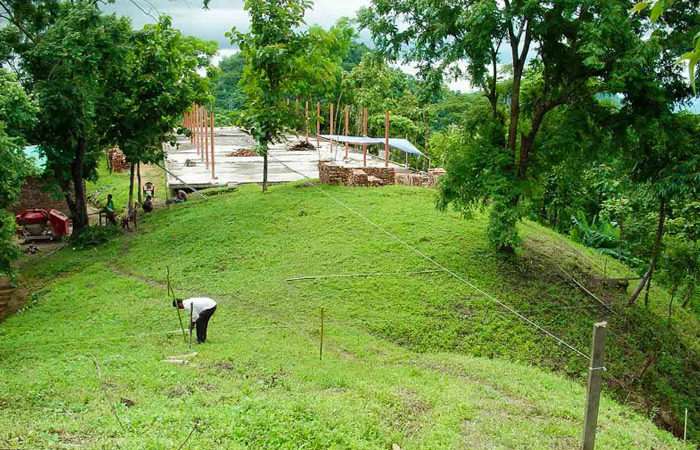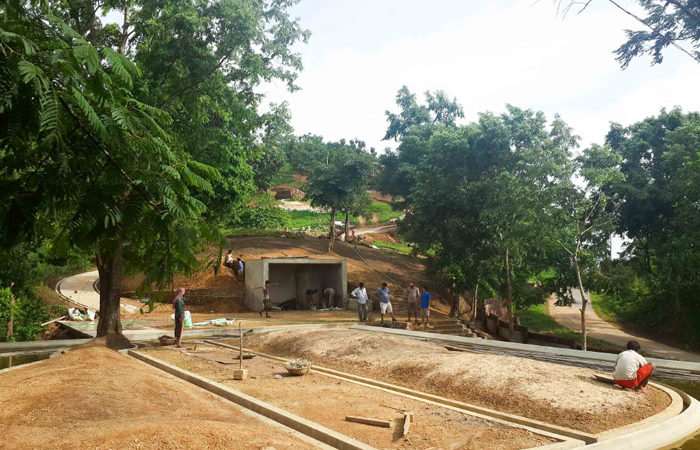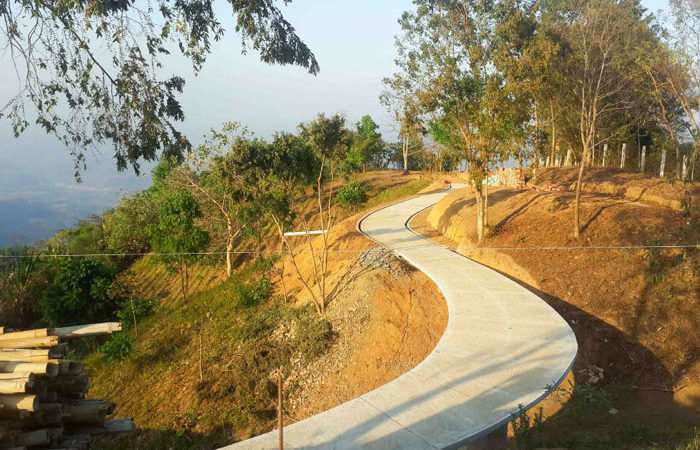THEME & ARCHITECTURE
As the very initial name suggests ‘SAIRU INDIGENOUS CULTURE PROMOTION AND HILL RESORT LTD.’, the Project is not merely a Hill Resort for Tourists; it also pledges to promote and alleviate the local culture and thus encouraging the possibility of generating employment for them. This initial name was ultimately shortened to SAIRU HILL RESORTS LIMITED keeping our intention intact.
The area over which SAIRU is spread is a hilly area with hardly any plain ground and hence all structures have been so designed and placed, giving due respect to the natural contours, that the total mass of the complex blends well with the natural environment. It was a very hard task to implement the design concept without disturbing the contours and the terrain.
SAIRU Hill Resorts has been designed and executed by DOMUS, one of the well renowned Architectural Consultancy firms of Bangladesh. The Principal Architect is also one of the partners of this Resort. The concept was to design a contemporary resort following the ‘Less is More’ principle. The masterplan was conceived by being sensitive towards the site and surroundings. Most of the structures have been built on steel stilts to minimize any change in the natural contours. The existing trees have been left untouched and more plants were added when shaping the landscape of the resort. The spaces were designed to obtain maximum panoramic views taking full advantage of the topography while including the luxuries of a modern-day-resort. Local materials were used to achieve the rustic outlook which blends with nature.
PRIME CONSIDERATIONS
Planning and designing of Sairu has been a challenging task. There was concern that construction could damage the pristine beauty of nature unless the mass blended with the topography.
Minimum excavation work has been carried out to keep the natural hill contours intact. As far as was possible even the existing vegetation has not been touched thus ensuring that the Resort Complex blends in well with the nature as it was. The Resort is 1742 feet above sea level and the Bay of Bengal is located 40km crow-flight distance away to the west. Usually in our country buildings are designed and constructed keeping a North-South orientation considering the wind-flow pattern and sun angle. In the case of Sairu we had to deviate from this thumb rule considering the fact that there is no specific wind pattern in the area. One can actually feel the wind flowing from all directions at different times. Moreover building was placed in North West Direction to exploit maximum viewing of the scenic horizon towards Bay of Bengal. Extended roofing is used to protect from sun rays and heavy rain fall. Plantation has been done to reduce the heat. The 12-acre site of Sairu has a 360° panoramic view with low drifting clouds. So, view has been one of the major considerations for placing the structures facing Southwest so as to exploit maximum viewing of the scenic horizon. Sairu Resort overlooks the Sangu River to the Northwest, the Bay of Bengal to the Southwest and the hilly range along the Myanmar border towards the East.
Local materials: stone, bamboo and wood has been used wherever possible and everything else had to be sourced from outside. Water had to be sourced from a spring almost 1200 feet below the resort site pumping up at 4 stages with 4 Heavy duty pumps and 4 water reservoirs. The project also has rain water harvesting system.
LANDSCAPING
Due to indiscriminate logging over the years most of the hills around the area have become barren but SAIRU has been lucky to be located at a place that is still green. However, SAIRU has been so designed so as to enhance the natural beauty and environment of the total area with plantations of local indigenous plants and also some other local ornamental and flowering trees. The design also includes a water-body in the landscape to serve the purpose of an artificial lake which will not only add to the beauty of the resort but will in fact be collecting rainwater and act as a water reservoir to service the resort as and when required
CHALLENGES
Planning for the Project has been a challenging task till its completion. To start with the area is hilly with no chunk of plain land anywhere in the vicinity. Any construction work would damage the pristine beauty of Nature and hence the design had to cater for minimum change to the topography keeping the contours intact. Happily, except for the driveway which had to be scrapped and curved out, there isn’t any visible change to the surface area.
Sourcing Water from a spring almost 1800 feet below has been and still is a colossal task. Water has to be pumped up in four stages and since there is no electricity for 15/16 hours a day a full-load full-time generator has to be operated.
Being a remote area managing men and materials for construction which are not locally available was another major challenge. Except for some local stones and bamboos everything else had to be sourced from Chittagong & Dhaka which was a costly affair and time consuming. All equipment and materials had to be manually carried to site which added to the cost of construction and it took almost 7 years from planning to completion.
Sourcing Management Staff is another challenge as no one wants to stay for long in such a remote area.
Most of the required food stuff also have to be sourced all the way from Chittagong on a daily basis to maintain freshness which is expensive.
Communications is of vital importance in all spheres of life. Telephone network in the area is very poor. We have tried and are still trying with the different Service Providers to improve the communication status. Also non-availability of wi-fi in the region is creating tremendous woes for all users. Our Clients cannot connect or even if they somehow do manage to connect the conversations are usually garbled. For as long as this problem is not solved we hope our Clients will appreciate the situation in good spirit.
In short, the cost of construction & development, transport, operation and various challenges on daily basis in Sairu Hill Resorts Ltd. Is not comparable to that of in a plain land.


